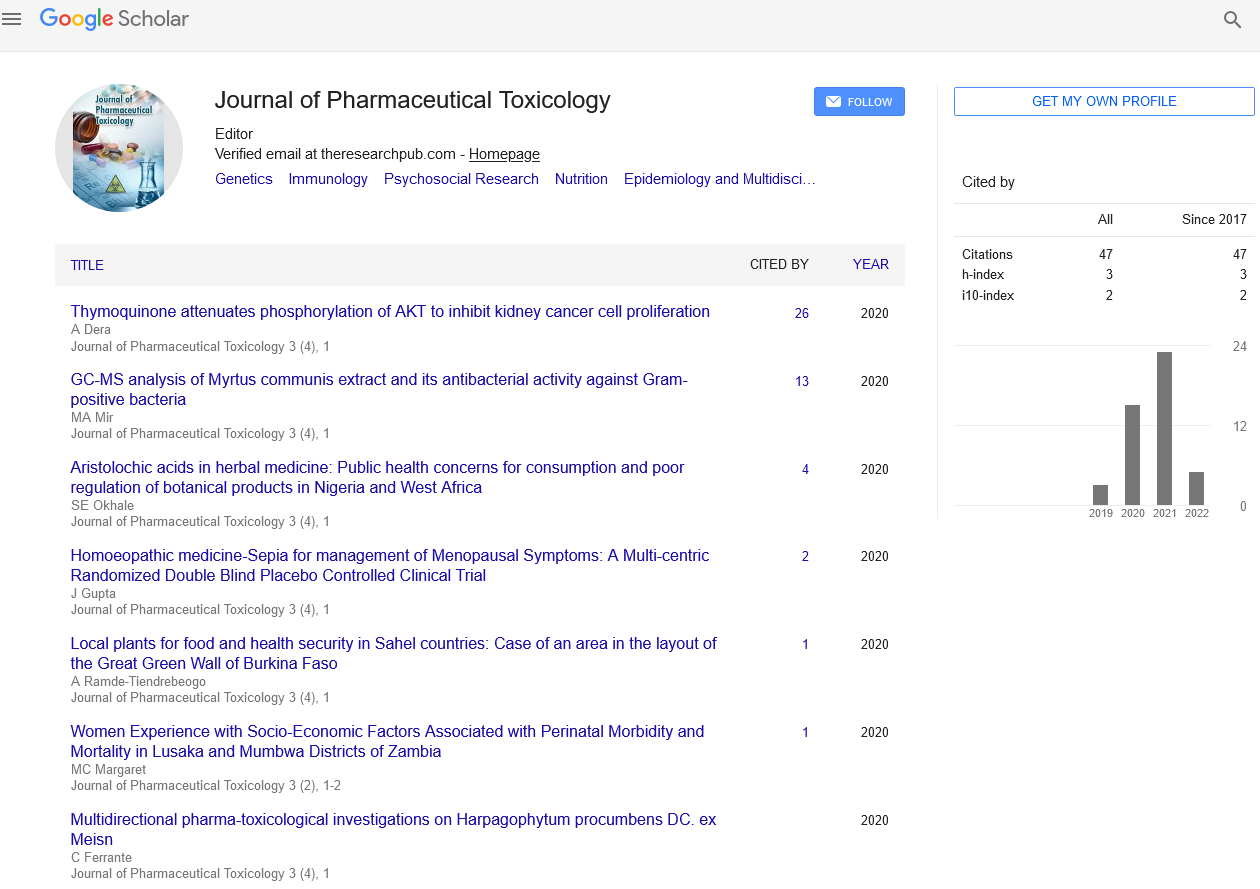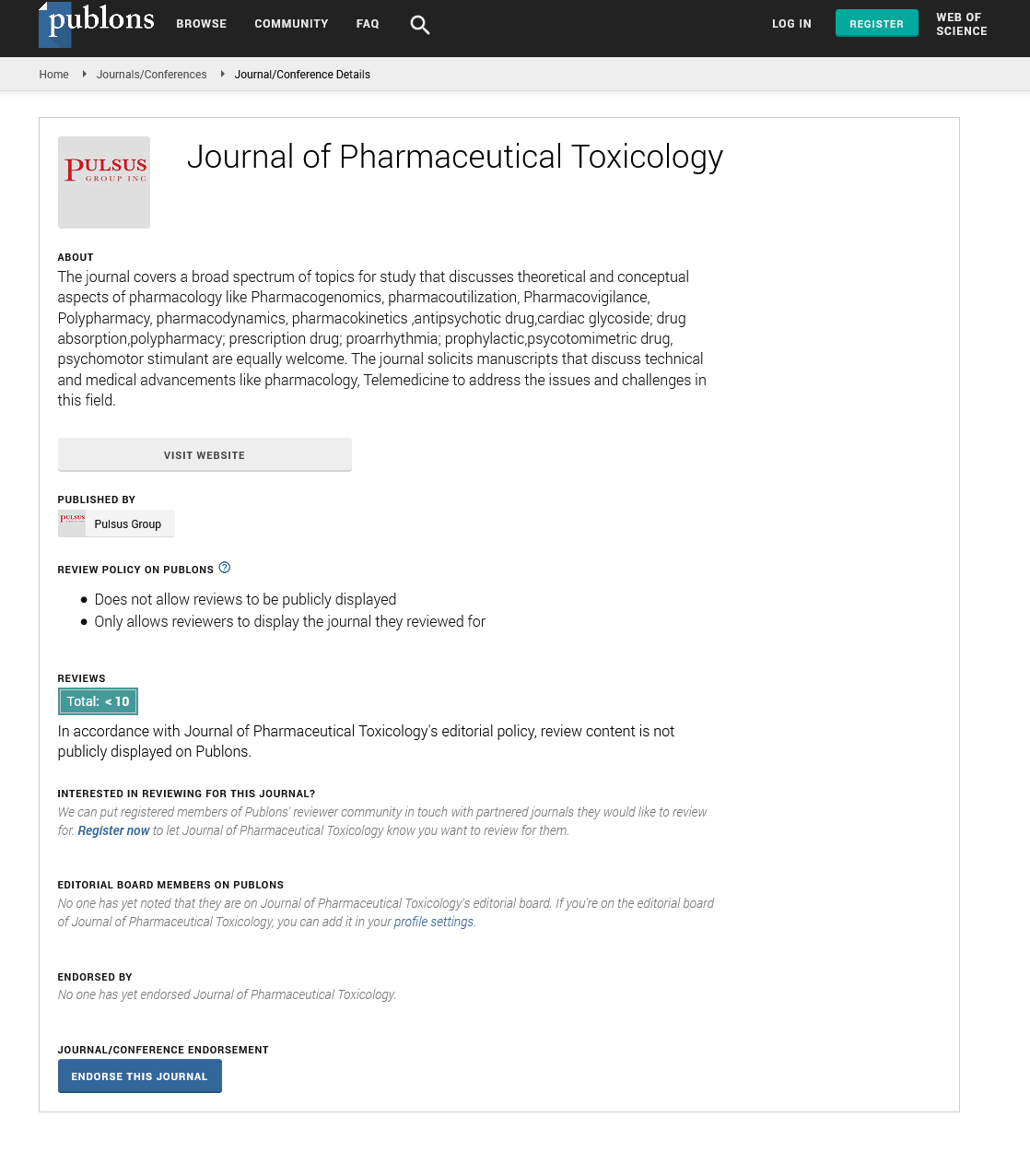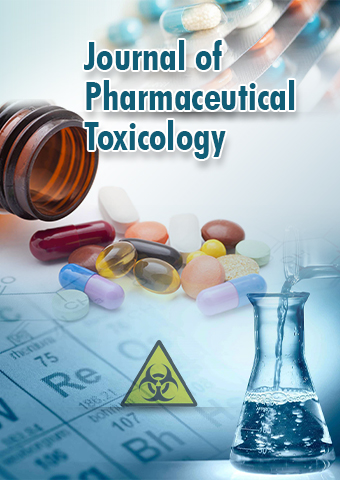Editorial - Journal of Pharmaceutical Toxicology (2023) Volume 6, Issue 4
Pharmaceuticals Has Been the Development of Targeted Therapies And Personalized Medicine
Flaxen Coward*
Department of Chemical Engineering, Virginia
Department of Chemical Engineering, Virginia
E-mail: flaxen.coward@rediff.com
Received: 01-August-2023, Manuscript No. oajpt-23-108598; Editor assigned: 3- August -2023, PreQC No. oajpt-23-108598 (PQ); Reviewed: 17- August -2023, QC No. oajpt-23-108598; Revised: 22- August -2023, Manuscript No. oajpt-23-108598 (R); Published: 28- August -2023; DOI: 10.37532/ jpt.2023.6(4).132-134
Abstract
Pharmaceuticals play a vital role in modern healthcare, revolutionizing the treatment and prevention of various diseases and improving the overall quality of life for millions. Pharmaceutical companies are at the forefront of scientific innovation, constantly striving to develop groundbreaking medications and therapies that address unmet medical needs. The journey of a pharmaceutical product, from its inception to the pharmacy shelves, is a complex and rigorous process. It typically begins with extensive research and development, involving teams of scientists, researchers, and experts collaborating to identify potential drug candidates. This phase entails a profound understanding of the underlying disease mechanisms and aims to discover molecules that can effectively target and modulate them. Once promising drug candidates are identified; they undergo preclinical testing on cell cultures and animal models to assess their safety, efficacy, and potential side effects. The data collected during this stage plays a crucial role in determining whether the drug should progress to human clinical trials.
Introduction
Clinical trials represent a pivotal stage in the pharmaceutical journey. These trials involve human volunteers and are conducted in several phases, each designed to assess different aspects of the drug’s safety and efficacy. Phase I trials are small-scale, focusing on safety and dosing; Phase II trials expand the patient pool to evaluate effectiveness and side effects, while Phase III trials involve large-scale testing on a diverse patient population to confirm the drug’s benefits and monitor adverse reactions [1,2].
If the drug successfully navigates through the clinical trial process and gains regulatory approval from government agencies, it can be brought to market. Once available, ongoing pharmacovigilance ensures the continuous monitoring of the drug’s safety, making sure any adverse effects are promptly identified and addressed. Pharmaceutical companies invest significant resources and time into bringing a new drug to market. However, these investments are not without risk, as many potential medications may not make it past the early stages due to safety concerns or lack of efficacy. Beyond the research and development of new drugs, the pharmaceutical industry also plays a pivotal role in generic drug production. Generic drugs are less expensive copies of brand-name medications, and they help increase access to essential treatments for a broader population [3].
Moreover, ongoing pharmaceutical research is not limited to just new drugs. Companies invest in repurposing existing medications to treat different conditions or enhance their therapeutic potential. Additionally, they explore personalized medicine, tailoring treatments to individual patient characteristics, such as genetics, to optimize effectiveness and minimize side effects. However, the pharmaceutical industry also faces challenges, including balancing profitability with affordability, ensuring ethical conduct in clinical trials, and navigating complex regulations worldwide. Striking a balance between these factors is essential to continue fostering medical advancements while remaining socially responsible [4,5].
Discussion
Pharmaceuticals are the backbone of modern medicine, driving progress and innovation in healthcare. From discovery to development and beyond, the tireless efforts of pharmaceutical companies and researchers contribute to saving lives, alleviating suffering, and creating a healthier world for generations to come. The pharmaceutical industry has witnessed remarkable progress over the past few decades, revolutionizing healthcare and improving the quality of life for countless individuals worldwide. With an increasing focus on innovative research and cutting-edge technology, pharmaceutical companies have successfully developed and introduced a wide array of drugs to combat various diseases and medical conditions.
One of the most significant breakthroughs in pharmaceuticals has been the development of targeted therapies and personalized medicine. Traditional treatments often relied on a one-sizefits- all approach, but advancements in genetic research and molecular biology have paved the way for personalized treatments tailored to an individual’s unique genetic makeup. This personalized approach not only enhances treatment effectiveness but also minimizes adverse effects, providing patients with a more customized and optimized healthcare experience.
Furthermore, pharmaceutical companies have been investing heavily in the development of novel drug delivery systems. These innovative techniques ensure that medications are administered in a manner that maximizes their therapeutic effects while minimizing potential side effects. Drug delivery systems range from nanotechnology-based carriers that target specific cells to time-release formulations that extend drug efficacy, reducing the frequency of administration and enhancing patient compliance [6-8].
Another area of progress in the pharmaceutical sector is the treatment of previously untreatable diseases. Diseases once considered incurable are now being tackled through groundbreaking research and the discovery of new molecular targets. Such advancements have led to lifechanging therapies for conditions like certain types of cancers, genetic disorders, and rare diseases, offering hope to patients who previously had none.
Moreover, the pharmaceutical industry’s commitment to research and development has led to an increased focus on preventive medicine. Through the development of vaccines and prophylactic treatments, diseases that were once widespread and devastating can now be effectively controlled or even eradicated. This proactive approach has significantly reduced the burden of infectious diseases on global public health, saving countless lives and preventing outbreaks. Despite these remarkable achievements, the pharmaceutical industry faces several challenges. The lengthy and rigorous drug development process, including clinical trials, can be timeconsuming and costly. Additionally, ensuring equitable access to life-saving medications remains a concern, particularly in low-income regions where affordability and availability pose significant barriers [9,10].
Conclusion
In conclusion, the advancements in pharmaceutical research have transformed the landscape of modern healthcare, offering innovative solutions to some of humanity’s most pressing medical challenges. Personalized medicine, advanced drug delivery systems, and breakthrough treatments for once-incurable diseases are just a few of the remarkable achievements of this dynamic industry. As technology continues to evolve, the pharmaceutical sector must navigate challenges and embrace opportunities to deliver accessible and effective treatments to people around the globe, ensuring a healthier and brighter future for all. Furthermore, pharmaceutical companies have been investing heavily in the development of novel drug delivery systems. These innovative techniques ensure that medications are administered in a manner that maximizes their therapeutic effects while minimizing potential side effects. Drug delivery systems range from nanotechnology-based carriers that target specific cells to time-release formulations that extend drug efficacy, reducing the frequency of administration and enhancing patient compliance.
References
- Van den Anker J, Reed MD, Allegaert K et al. Developmental Changes in Pharmacokinetics and Pharmacodynamics.J Clin Pharmacol.58, 10-25 (2018).
- Aagaard L. Off-Label and Unlicensed Prescribing of Medicines in Paediatric Populations: Occurrence and Safety Aspects. Clin Pharmacol Toxicol.117, 215–218(2015).
- Gore R, Chugh PK, Tripathi CD. Pediatric Off-Label and Unlicensed Drug Use and Its Implications.Curr. Clin. Pharmacol.12, 18–25 (2018).
- Sketris, IS. American Geriatrics Society Beers Criteria®Update Expert Panel. American Geriatrics Society 2019 Updated AGS Beers Criteria®for Potentially Inappropriate Medication Use in Older Adults.J Am Geriatr Soc.67, 674–694 (2019).
- Hill-Taylor B, Walsh KA, Stewart S et al. Effectiveness of the STOPP/START (Screening Tool of Older Persons’ potentially inappropriate Prescriptions/Screening Tool to Alert doctors to the Right Treatment) criteria: Systematic review and meta-analysis of randomized controlled studies.J Clin Pharm Ther.41, 158–169 (2016).
- Tommelein E, Mehuys E, Petrovic M et al. Potentially inappropriate prescribing in community-dwelling older people across Europe: A systematic literature review.Eur J Clin Pharmacol.71, 1415–1427.
- Prot-Labarthe S, Weil T, Angoulvant F et al. POPI (Pediatrics: Omission of Prescriptions and Inappropriate prescriptions): Development of a tool to identify inappropriate prescribing.PLoS ONE.9,25-68.
- Corrick F, Conroy S, Sammons H et al. Paediatric Rational Prescribing: A Systematic Review of Assessment Tools.Int J Environ Res Public Health.17, 1473-1496 (2015).
- Sadozai L, Sable S, Le E Roux et al. International consensus validation of the POPI tool (Pediatrics: Omission of Prescriptions and Inappropriate prescriptions) to identify inappropriate prescribing in pediatrics.PLoS ONE.15, 47-72 (2018).
- Barry E, Moriarty F, Boland F et al. The PIPc Study-application of indicators of potentially inappropriate prescribing in children (PIPc) to a national prescribing database in Ireland: A cross-sectional prevalence study.BMJ Open.8, 69-556 (2019).
Indexed at, Google Scholar, Crossref
Indexed at, Google Scholar, Crossref
Indexed at, Google Scholar, Crossref
Indexed at, Google Scholar, Crossref
Indexed at, Google Scholar, Crossref
Indexed at, Google Scholar, Crossref


